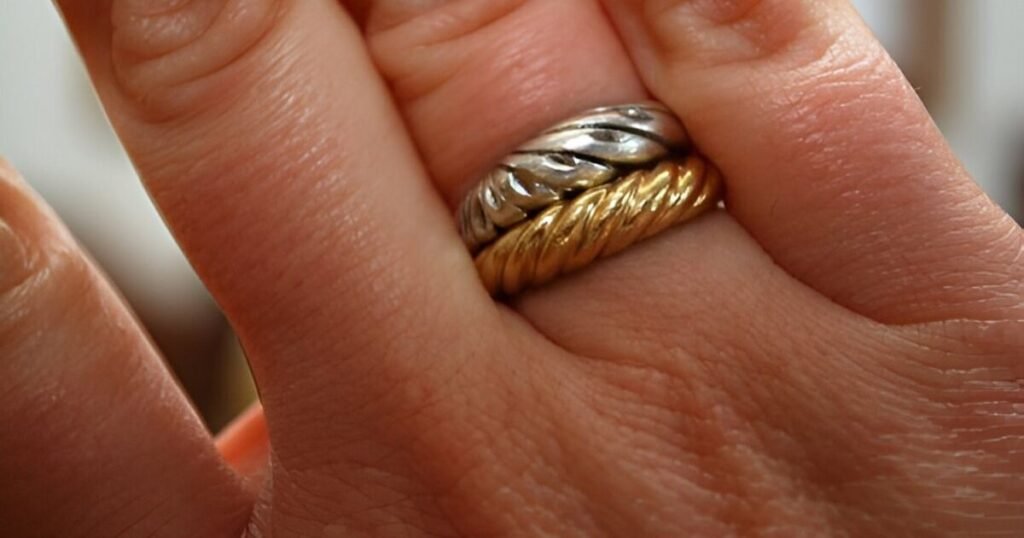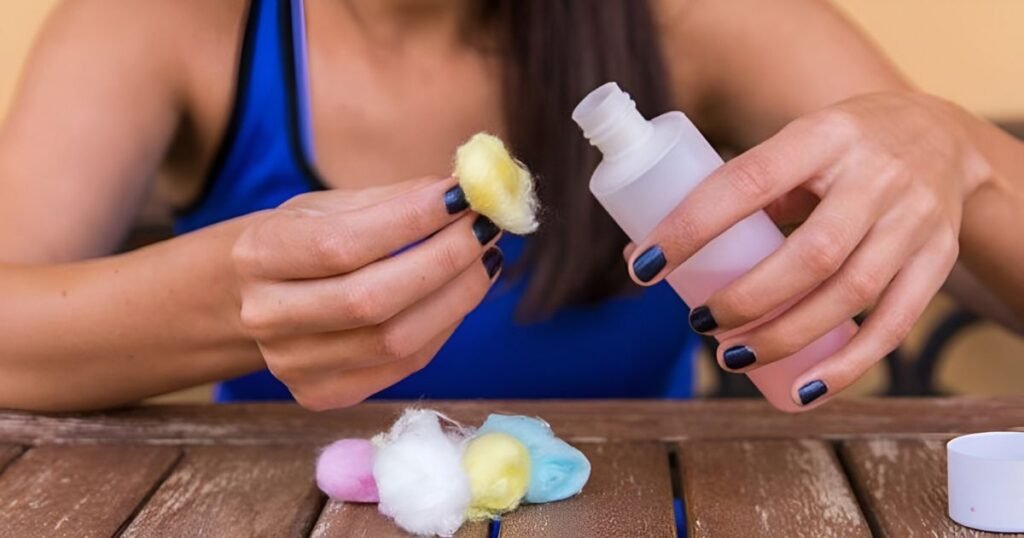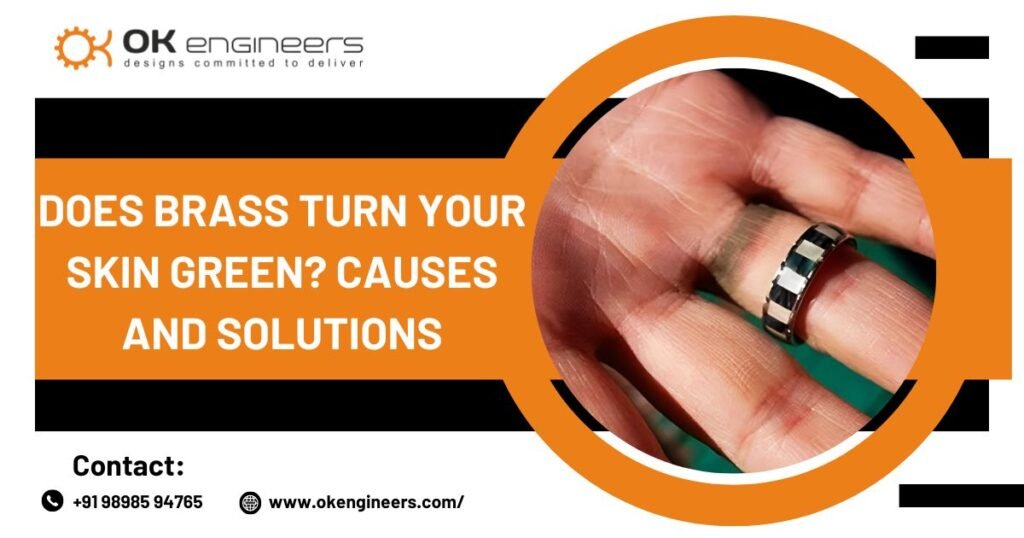Does Brass Turn Your Skin Green?
Brass jewelry and accessories are popular for their vintage look. However, many people notice a green stain on their skin after wearing brass items. This discoloration may cause concern. Below, we explore why brass turns your skin green and how to prevent it.
Why Does Brass Turn Your Skin Green?
Brass is an alloy made of Cu and Zn. When it comes into contact with sweat or moisture, a chemical reaction occurs.
Oxidation: Copper in brass reacts with oxygen, forming copper oxide.
Moisture and Sweat: Perspiration speeds up oxidation, resulting in a green patina.
Acidic Skin pH: Higher acidity in skin accelerates the reaction, making the green stain more noticeable.
Lotion and Perfume Use: Chemicals in skincare products may react with brass, increasing oxidation.
Environmental Factors: Humidity and exposure to air cause faster tarnishing.
Is the Green Staining Harmful?
- The green stain from brass is harmless and temporary.
- It is caused by copper reacting with skin oils and acids.
- Washing the affected area with soap and water removes the discoloration.
- Some people may have mild skin irritation, though it is uncommon.
- Wearing brass jewelry occasionally poses no health risk.
Factors That Make Brass More Likely to Stain
Certain conditions increase the chances of your skin turning green from brass:
- Humidity & Sweat: More moisture means more oxidation.
- pH Levels of Your Skin: Acidic skin reacts more strongly with brass.
- Body Lotions & Perfumes: Chemicals in skincare products accelerate oxidation.
- Prolonged Wear: The longer brass stays in contact with your skin, the more likely staining becomes.
How to Prevent Your Skin Turn Green on the Use of Brass

If you don’t want your skin to turn into a green color, taking precautions can help minimize brass-related discoloration. Let’s delve into some easy and effective methods:
1. Apply a Protective Coating
- Use clear nail polish to coat brass jewelry.
- Apply a thin layer to areas that touch the skin.
- Reapply every few weeks as the coating wears off.
2. Keep Your Skin Dry
- Avoid wearing brass jewelry while swimming or exercising.
- Dry your skin thoroughly before putting on brass accessories.
- Store brass jewelry in a dry place to prevent moisture exposure.
3. Use Skin-Friendly Barriers
- Apply a layer of petroleum jelly or lotion to the skin before wearing brass.
- Wear clothing or fabric between brass items and your skin.
- Use hypoallergenic jewelry coatings available in stores.
4. Clean Your Jewelry Regularly
- Mix lemon juice with baking soda and rub gently.
- Use a soft cloth to wipe off tarnish and dirt.
- Rinse with water and dry completely to prevent oxidation.
5. Opt for Brass with Protective Coatings
- Some brass jewelry is coated with lacquer to prevent tarnish.
- Choose jewelry that has an anti-tarnish sealant.
- Consider gold-plated or nickel-coated brass for added protection.
Best Alternatives to Brass Jewelry
If your skin is allergic to brass jewelry even after trying different methods to clear it, you can try these alternative metals to avoid getting a layer of green color on your skin.
Stainless Steel: Hypoallergenic and Resistant to Tarnish
Stainless steel is an excellent choice for those with sensitive skin because it is hypoallergenic and does not react with sweat or moisture. Unlike brass or copper, it does not corrode, rust, or tarnish easily, making it a durable and low-maintenance option for everyday wear.
Gold-Plated Jewelry: A Thin Layer of Gold Prevents Reactions
Gold-plated jewelry features a base metal—often brass or stainless steel—coated with a thin layer of gold. This layer acts as a barrier, preventing direct contact between the metal and your skin, which helps reduce the chances of discoloration or irritation. However, over time, the plating may wear off, requiring re-plating to maintain its appearance.
Sterling Silver: Less Likely to Cause Skin Stains
Sterling silver is composed of 92.5% silver & 7.5% other metals, generally copper. While it is less likely to turn your skin green compared to brass, it can still tarnish over time due to exposure to air and moisture. Regular cleaning and proper storage can help maintain its shine and prevent staining.
Titanium: Lightweight and Non-Reactive with Skin
Titanium is a strong, lightweight metal that is highly resistant to corrosion and oxidation. It is naturally hypoallergenic, making it ideal for people with metal sensitivities. Titanium jewelry is also extremely durable, ensuring long-lasting wear without the risk of staining or tarnishing.
Platinum: A Premium Metal That Does Not Oxidize
Platinum is one of the most luxurious and durable metals used in jewelry. It does not oxidize or tarnish, making it an excellent choice for long-term wear. Moreover, platinum is non-allergic, which makes it very suitable for those with sensitive skin. Its density and natural white sheen make it a popular choice for high-end jewelry, especially wedding and engagement rings.
How to Remove Green Stains from Skin

Now, this is gonna create a big problem. Many skin types are sensitive and it is very normal that people get green stains from brass on their skin. No matter how much they try to remove it, it leaves an impact.
So here are a few ways if brass stains your skin, follow these steps:
- Wash with Soap and Water
- For cleaning the area use warm water and a mild soap.
- Rub gently until the green stain fades.
- Use Lemon Juice or Vinegar
- Dab a cotton ball with lemon juice or white vinegar.
- Rub over the stained area for a few seconds.
- Rinse with water and moisturize your skin.
- Baking Soda Paste
- Mix baking soda with a little water.
- Make a layer of paste on the colored area and rub it in a gentle way.
- Rinse with water and dry the skin.
- Hydrogen Peroxide Solution
- Use a little amount of hydrogen peroxide to the area of stain.
- Let it sit for a minute, then rinse with water.
Common Myths About Brass and Skin Discoloration
“As many people, as many opinions”. This triggers myths about brass discoloration. Let’s zip them up by looking into these myths about brass corrosion.
- Brass poisoning occurs from skin stains – False. The green stain is harmless.
- Allergic reactions cause green discoloration – False. Allergies cause rashes, not green stains.
- Only fake brass causes staining – False. Even pure brass can cause oxidation.
- Brass stains are permanent – False. They wash off easily.
- Brass jewelry is unsafe – False. It is widely used and safe for most people.
How to Properly Store Brass Jewelry
- Proper storage can help maintain brass jewelry’s shine and prevent oxidation.
- Store in an airtight container to reduce exposure to air and moisture.
- Use anti-tarnish strips inside jewelry boxes to slow down oxidation.
- Keep brass jewelry separate from other metals to prevent chemical reactions.
- Avoid leaving brass jewelry in humid areas like bathrooms.
- Wrap brass jewelry in a soft cloth to prevent scratches and tarnish buildup.
DIY Brass Jewelry Maintenance Tips
- Keeping brass jewelry looking new requires minimal effort.
- Polish with a microfiber cloth to remove daily dirt and oils.
- Use a mixture of salt and lemon juice for deep cleaning.
- Avoid harsh chemical cleaners that may strip brass of its natural luster.
- Apply a thin coat of coconut oil to create a protective barrier.
- Use a brass cleaning solution for stubborn tarnish.
Conclusion
Brass can get corroded due to air and moisture. However, cleaning it in regular intervals will give it a shining impact. By understanding the causes of brass skin discoloration and implementing preventive measures, you can continue enjoying your favorite brass accessories without concern.
Frequently Asked Questions
Not always. It depends on your skin pH, moisture levels, and how often you wear the jewelry.
Yes, but regular exposure to sweat and moisture increases the chances of discoloration.
Apply a protective coating on the jewelry or switch to hypoallergenic metals.
Most people can wear brass, but those with metal allergies should opt for coated or alternative metals.
Clean it every few weeks to prevent tarnish and oxidation.
Follow Us On : Facebook, Instagram
You May Also Like : Brass Nozzle Manufacturer, Brass Arm Back Manufacturer



